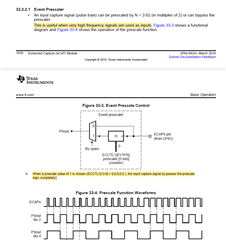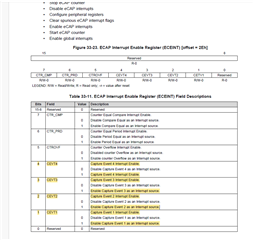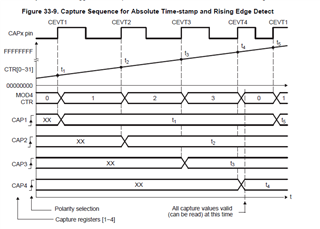I am trying to use 3 ECAP inputs to measure a motor Hall-feedback timing, but on each hall-edge transition, I need to read the logic-value of the input. In order to use ECAP, it looks like I need to assign the pin-mux as an ECAP (not an N2HET), but I do not see in the ECAP registers the ability to read the logic value present on the ECAP input. Does this ECAP input also need to be routed to a second GPIO/N2HET input in order to read the logic value?
Thanks,
Jim





